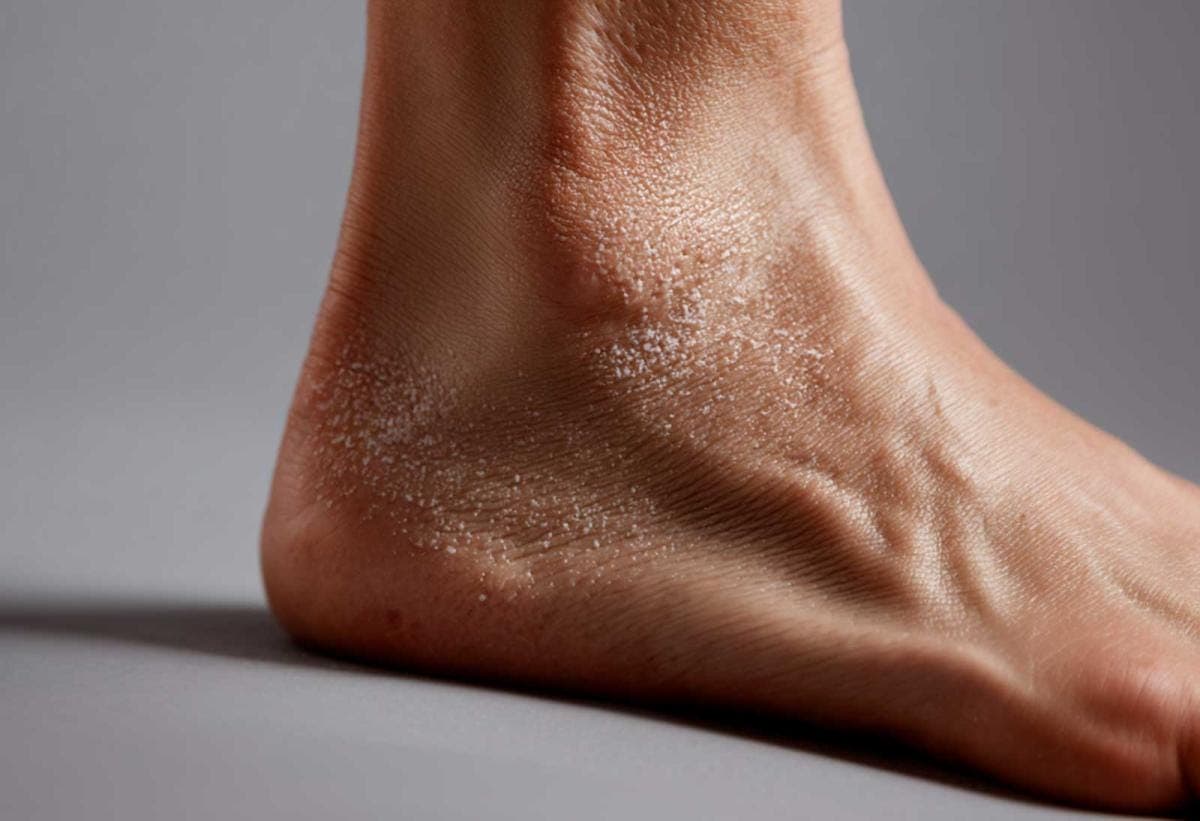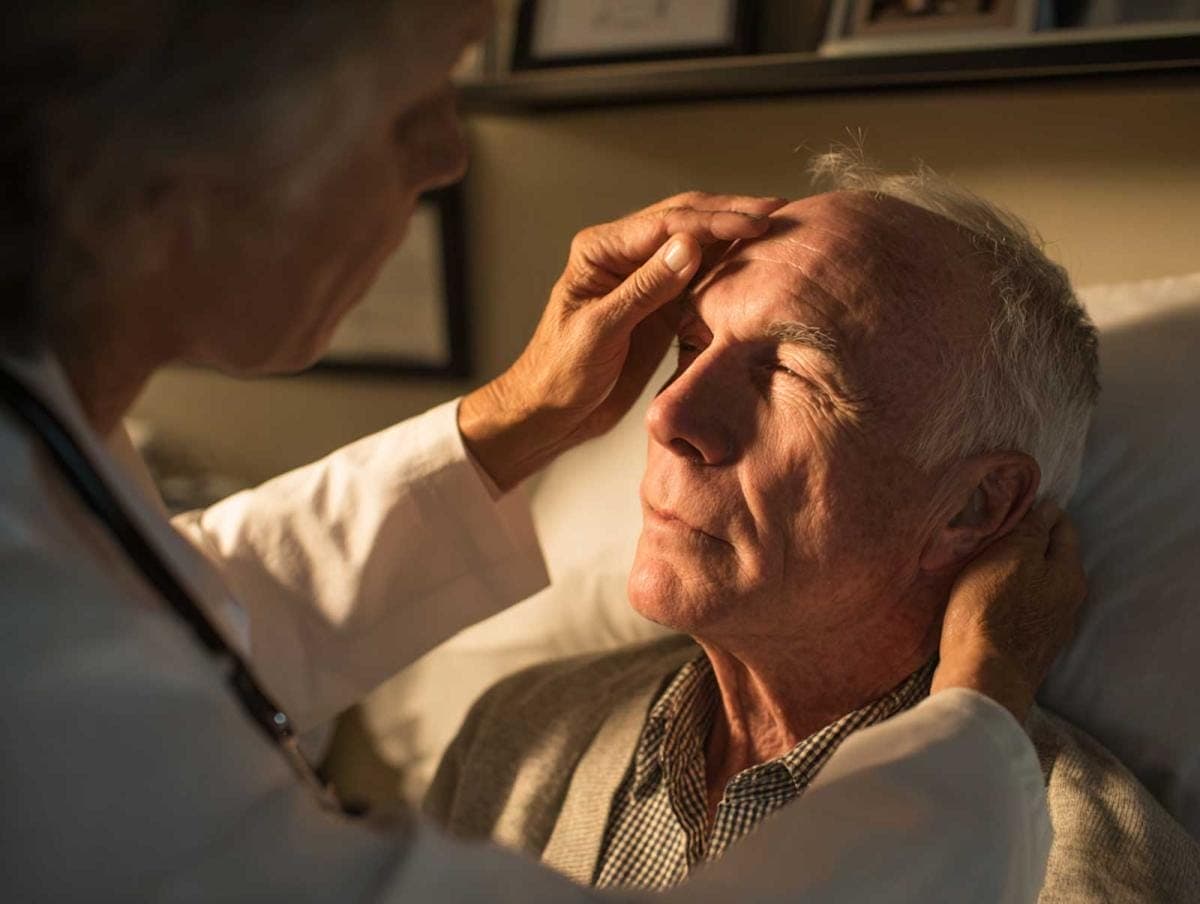If you click on links we provide, we may receive compensation.
Most people associate flaky skin with dryness, maybe a harsh cleanser, or winter weather. But sometimes, skin builds up not just from dehydration, but from a deeper dysfunction in how it renews itself. That’s where hyperkeratosis comes in.
This thickening of the skin’s outermost layer isn’t a single condition but a symptom that can show up in many forms. It can look like rough patches, stubborn bumps, cracked heels, or even hardened calluses. And while it often flies under the radar, hyperkeratosis can be more than just a cosmetic concern. It can signal irritation, chronic rubbing, or a medical issue underneath.
Let’s break down what hyperkeratosis really is, why it happens, how it shows up on the body, and what you can actually do about it.
What Is Hyperkeratosis?
Hyperkeratosis is the excessive buildup of keratin – the fibrous protein that forms the outermost layer of the skin, nails, and hair. Keratin’s job is to form a strong barrier, locking out pathogens and preventing water loss. It’s part of what makes skin resilient.
But when keratin production goes into overdrive or the normal shedding process slows down, it starts to pile up. The result? Thickened, sometimes scaly, skin that’s not shedding like it should.
This overproduction can be triggered by several things: constant pressure, friction, inflammation, genetics, sun damage, or an underlying medical condition. That’s why hyperkeratosis isn’t a single disease – it’s a process. And it can look very different depending on what’s driving it.

What Causes the Skin to Overproduce Keratin?
To understand why hyperkeratosis happens, you need to understand skin renewal. Healthy skin constantly turns over. New skin cells form at the bottom of the epidermis, and over 28 to 40 days, they move upward and die, eventually flaking off.
Hyperkeratosis interrupts this rhythm. Sometimes the skin cells don’t shed properly. Other times, the skin’s response to stress or injury is to armor up – by adding more keratin.
Here are common causes:
Chronic pressure or friction
Your skin reacts to repeated stress by thickening. Think calluses on your feet or the bump where your pen rests on your finger. This is protective hyperkeratosis – your body building a shield.
Genetic conditions
Some people inherit conditions that affect keratin production or skin cell turnover. Examples include keratosis pilaris or ichthyosis. These are often lifelong and vary in severity.
Inflammation or irritation
When the skin is inflamed – whether from eczema, psoriasis, or constant rubbing – it may respond by thickening. In these cases, hyperkeratosis is often part of a cycle: irritation triggers thickening, which causes more irritation.
Viral infections
Warts are a classic example. Caused by HPV, they hijack skin cell function and result in a thickened, bumpy growth – usually hard to the touch.
Sun damage
Long-term exposure to UV light can cause actinic keratoses – rough, scaly patches that are considered precancerous. These are a common form of hyperkeratosis in older adults or those with significant sun exposure.
Different Types of Hyperkeratosis
Hyperkeratosis isn’t one-size-fits-all. Its appearance and risks depend on the cause and location.
Here are the most common types:
1. Keratosis Pilaris
Tiny, dry bumps that often appear on the arms, thighs, cheeks, or buttocks. Sometimes called “chicken skin,” this condition is caused by keratin plugging up hair follicles. It’s harmless but often persistent.
2. Calluses and Corns
Formed from repeated pressure or friction, typically on feet or hands. Calluses are broader and flatter; corns are more compact and often painful. Both are types of localized hyperkeratosis.
3. Actinic Keratosis (Solar Keratosis)
Scaly, crusty patches that arise in sun-exposed areas like the face, ears, neck, or hands. Unlike other types, these carry a risk of evolving into squamous cell carcinoma if left untreated.
4. Lichen Simplex Chronicus
Thick, leathery patches formed from repeated scratching or rubbing. Often part of the itch-scratch cycle seen in chronic eczema.
5. Verrucas and Warts
Caused by human papillomavirus (HPV), these often have a rough surface and are common on hands, feet, or genitals.
6. Ichthyosis
A group of genetic disorders where skin becomes dry, thick, and scaly. It often begins in early childhood and varies widely in severity.
7. Psoriasis
This inflammatory condition causes raised plaques covered in thick, silvery scales. The buildup results from a hyperactive immune system that speeds up skin cell turnover.

How Does Hyperkeratosis Affect the Skin?
It might seem like just a thick patch of skin, but hyperkeratosis can change more than texture. It can affect appearance, comfort, and even confidence.
Appearance
Hyperkeratosis can look rough, scaly, or bumpy. In some cases, like keratosis pilaris, it can be flesh colored. In others, like actinic keratosis, it may appear red or brown. When on the feet or hands, the skin might feel like leather.
Discomfort
Thickened skin can crack, especially on heels or joints. Cracks can be painful and lead to secondary infections. Corns or plantar warts can make walking uncomfortable.
Sensitivity
In some forms – especially those linked to eczema or psoriasis – hyperkeratosis is itchy. In others, like warts, the area may feel painful to pressure.
Psychological Effects
While not dangerous in most cases, visible hyperkeratosis can affect self-esteem. People with keratosis pilaris or facial warts may feel self-conscious even if the condition is medically benign.
When Is Hyperkeratosis a Medical Concern?
Not all thick skin is harmless.
Actinic keratoses, in particular, deserve attention. According to the Skin Cancer Foundation, up to 10% of these lesions may progress to squamous cell carcinoma: skincancer.org
If a patch of skin is changing shape, color, or texture – especially if it bleeds or ulcerates – it’s time to see a dermatologist. The same goes for warts that don’t go away, calluses that cause pain, or persistent thick patches that don’t improve with skincare.
How to Treat or Manage Hyperkeratosis
Treatment depends on the cause. For some types, a gentle skincare routine can help. For others, medical attention is necessary.
Moisturizers and Emollients
Dry, thickened skin often benefits from urea, lactic acid, or salicylic acid-based creams. These ingredients soften keratin and help break down buildup. Products like AmLactin or CeraVe SA Lotion are often recommended for keratosis pilaris.
Exfoliation
Gently removing the outer layer of skin using chemical exfoliants (like AHAs or BHAs) or physical scrubs can help with milder forms. But overdoing it can worsen inflammation – especially in conditions like eczema or psoriasis.
Prescription Topicals
In conditions like actinic keratosis or severe psoriasis, doctors may prescribe retinoids (to normalize skin cell turnover) or corticosteroids (to calm inflammation).
Cryotherapy or Laser Treatment
Dermatologists often freeze actinic keratoses or stubborn warts with liquid nitrogen. Laser options may be used for more resistant lesions.
Addressing the Cause
Removing friction (like ill-fitting shoes), managing inflammation, or treating viral infections are critical for long-term resolution. In genetic conditions like ichthyosis, consistent moisturizing and skin management is key.
Can You Prevent Hyperkeratosis?
In many cases, yes – or at least reduce the severity. Here’s how:
Protect your skin
Avoid unnecessary rubbing, friction, or pressure. Wear gloves during repeated manual tasks. Use cushioned shoes if you’re on your feet all day.
Hydrate consistently
Use moisturizers daily, especially after bathing. Look for ingredients like ceramides, glycerin, or urea.
Sun protection matters
Wear sunscreen to reduce the risk of actinic keratosis. According to the American Academy of Dermatology, daily SPF 30+ can significantly reduce new lesions: aad.org
Gentle skincare
Avoid over-washing or using harsh soaps. Fragrance-free, pH-balanced cleansers can help maintain the skin barrier.
Manage underlying conditions
For those with eczema, psoriasis, or diabetes, keeping the primary condition controlled can help prevent skin changes like hyperkeratosis.
Why It’s Important Not to Ignore It
Hyperkeratosis may seem like just a rough patch or cosmetic issue, but it can be your skin’s way of waving a flag. Whether it’s reacting to repeated stress, fighting infection, or signaling something deeper, ignoring it doesn’t make it go away.
Especially when hyperkeratosis appears on the face, scalp, or areas that affect mobility or comfort, addressing it can improve both physical and emotional well-being. In some cases – like actinic keratosis – early treatment can prevent skin cancer.
Even in its most benign forms, managing thickened skin makes your skincare routine more effective. Serums and moisturizers penetrate better when the dead skin barrier isn’t overloaded. Plus, your skin looks and feels smoother.
FAQs About Hyperkeratosis
Is hyperkeratosis contagious?
No. The process itself isn’t contagious. But warts, which are a type of hyperkeratosis, are caused by HPV and can spread through contact.
Can hyperkeratosis go away on its own?
Some cases, like mild keratosis pilaris, may improve with age or seasonal changes. Others, like actinic keratoses, need treatment to resolve.
What’s the best cream for hyperkeratosis?
Creams with urea, salicylic acid, or lactic acid are often most effective. These help soften and exfoliate thick skin. Brands like AmLactin, Eucerin UreaRepair, and CeraVe SA Lotion are commonly used.
Is there a cure for genetic hyperkeratosis like ichthyosis?
No cure yet, but it can be managed with consistent care, including moisturizers, exfoliation, and sometimes retinoid medications.
Should I see a dermatologist?
Yes, if the area is painful, changes appearance, doesn’t improve with over-the-counter treatments, or if you’re unsure of the cause.




